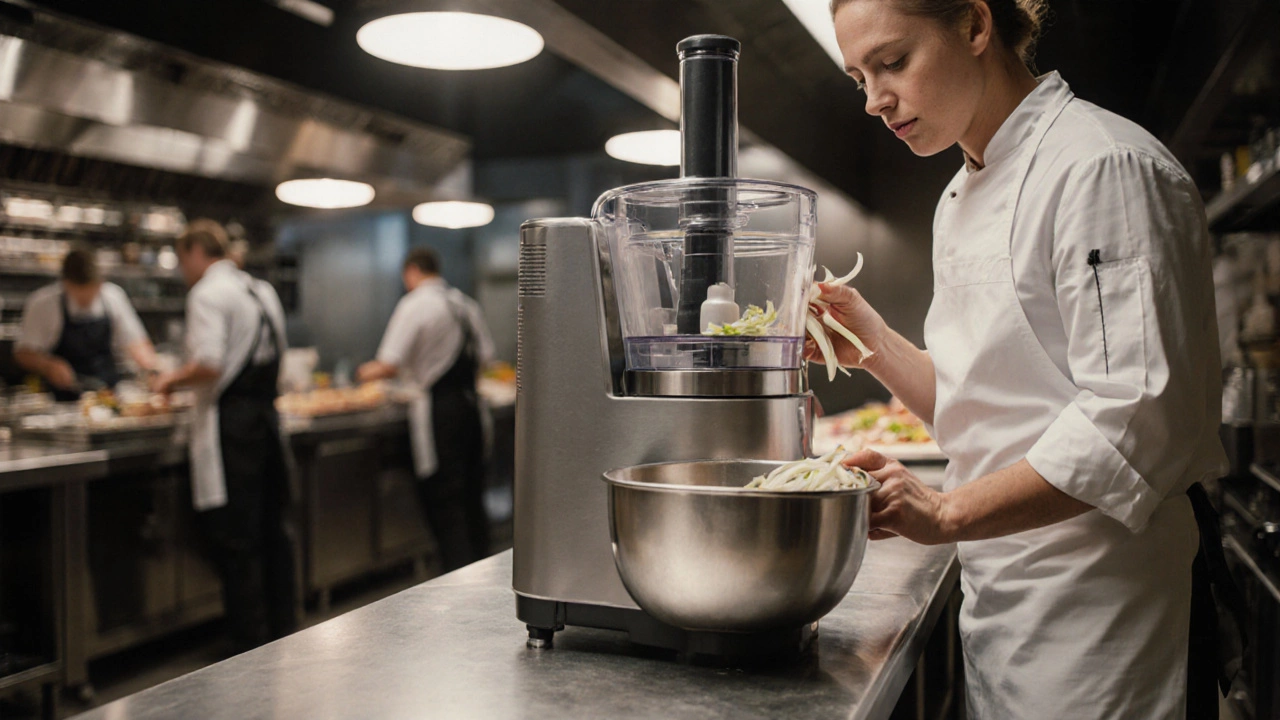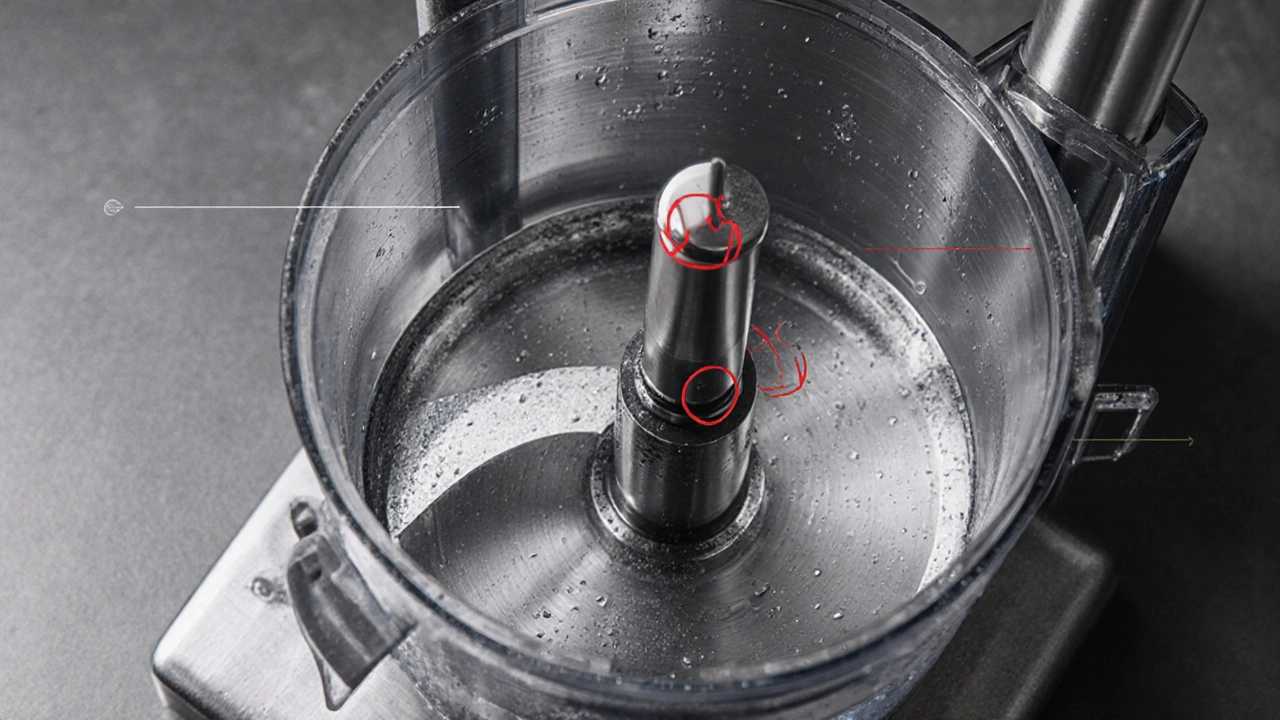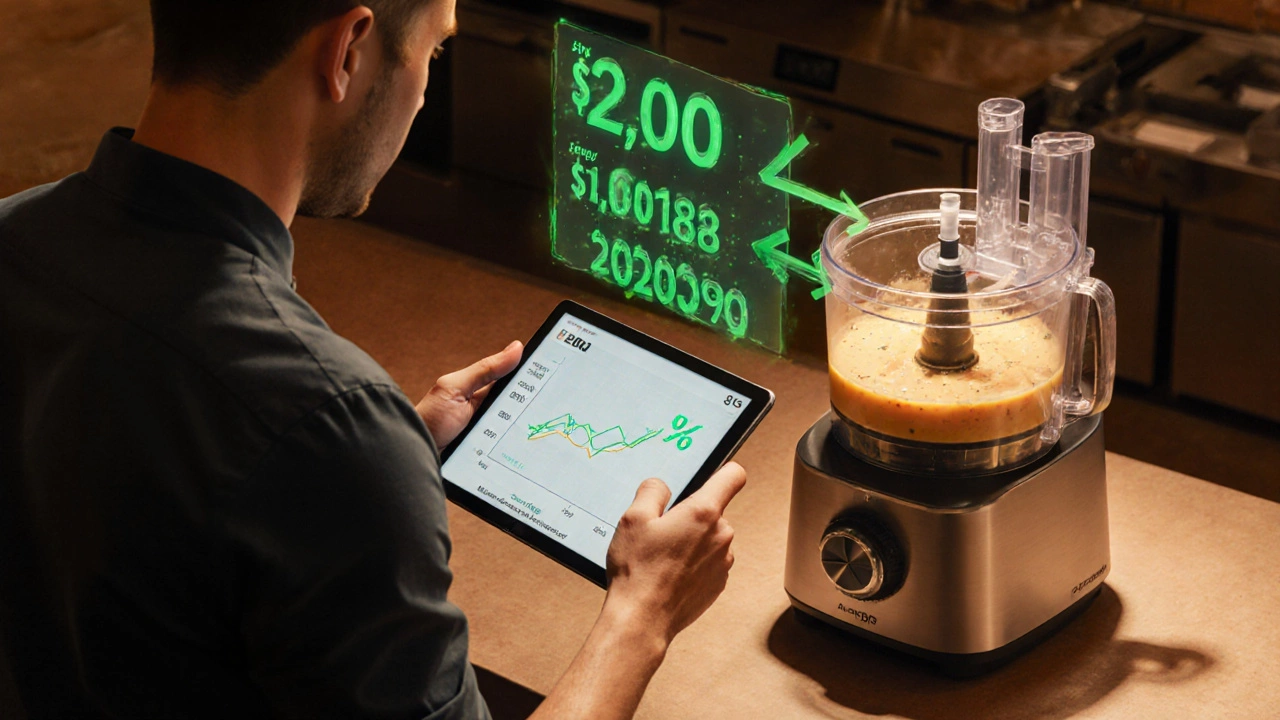Do Restaurants Use Food Processors? Inside the Commercial Kitchen

Restaurant Food Processor Selector
Recommended Processor Type:
Key Features:
| Feature | Floor-Standing (Industrial) | Countertop (Compact) |
|---|---|---|
| Power (Watts) | 1,500–1,800 | 800–1,200 |
| Bowl Capacity (L) | 12–20 | 5–8 |
| Feed Tube Length | 30 cm (continuous load) | 20 cm (batch load) |
| Safety Interlock | Dual-lock (bowl + lid) | Single-lock |
| Noise (dB) | 85–92 | 78–84 |
| Price (AUD) | 2,500–5,500 | 900–2,200 |
| Ideal For | High-volume brunch, catering, hotel buffets | Fine-dining, cocktail bars, small cafés |
HACCP Compliant
Smooth surfaces and easy-to-clean parts ensure compliance with food safety standards.
Continuous Operation
Built for long hours without overheating or breakdowns.
Cost Efficiency
Reduces labor costs and increases productivity over time.
Key Takeaways
- Most restaurants rely on food processors for speed, consistency, and labor savings.
- Commercial‑grade machines differ in power, capacity, and safety features from home models.
- Choosing the right processor depends on menu style, volume, and available prep space.
- Proper cleaning, HACCP compliance, and scheduled maintenance keep the equipment safe and efficient.
- A simple cost‑benefit analysis shows ROI in as little as 6‑12 months for busy kitchens.
What Is a Food Processor?
When you hear the term Food processor is a versatile electric appliance that chops, shreds, purees, and mixes ingredients in seconds, you probably picture a countertop gadget at home. In a restaurant, the same principle applies but the machines are built for higher volume, tougher ingredients, and stricter hygiene standards.
Commercial vs. Consumer Models
The main difference lies in power rating and durability. A Commercial food processor typically runs on 1,200‑1,800 watts, has a stainless‑steel bowl of 8‑20 litres, and a motor designed for continuous use. By contrast, a consumer model sits around 600‑800 watts and is meant for occasional bursts.
How Restaurants Use Food Processors
Restaurants integrate the appliance at three crucial points:
- Prep stage: Slicing onions, grating cheese, or making pesto in bulk.
- Cooking stage: Pureeing soups, sauces, or batters directly before a stove or immersion blender.
- Service stage: Quickly assembling toppings for salads or garnishes for plated dishes.
Each use case cuts down manual labor, standardises texture, and speeds up ticket times.

Types of Food Processors Found in Restaurants
Below is a quick rundown of the most common formats:
- Floor‑standing processor - Large capacity, ideal for high‑volume prep lines.
- Countertop processor - Compact, fits smaller back‑of‑house areas, often used in boutique eateries.
- Dedicated pureeing unit - Built‑in feed tube and low‑speed blade for smooth soups.
- Multi‑function blender‑processor - Combines high‑speed blending with chopping, useful for cocktail bars.
Key Features Restaurants Look For
When a chef evaluates a machine, the checklist usually includes:
- Blade material - Hardened stainless steel for durability.
- Feed tube - Allows continuous loading without stopping the motor.
- Safety interlock - Prevents the motor from running unless the bowl is locked.
- HACCP‑friendly design - Smooth surfaces, removable parts, and easy‑rinse capability.
- Power rating and noise level - Important for open‑kitchen concepts.
Cost, ROI, and Budgeting
Entry‑level commercial processors start around AUD 800, while high‑capacity floor models can exceed AUD 5,000. To decide if the spend is justified, most restaurateurs run a simple ROI formula:
ROI (months) = (Initial Cost) / (Hourly Labor Saved × Avg. Wage)
For example, a mid‑range processor costing AUD 2,200 saves roughly 2 labor hours per day in a busy brunch spot. At an average wage of AUD 30 per hour, the break‑even point is about 37 days - less than two weeks of operation.
Safety, Hygiene, and HACCP Compliance
Food safety auditors scrutinise three aspects:
- Cleaning protocol: All removable parts (bowl, lid, blade, feed tube) must be dishwasher‑safe or easy‑rinse.
- Cross‑contamination control: Dedicated colour‑coded bowls for allergens (e.g., nuts vs. dairy) simplify tracking.
- Maintenance schedule: Monthly motor inspections, blade sharpening, and gasket replacement keep the unit running safely.
Documenting each step satisfies HACCP (Hazard Analysis and Critical Control Points) requirements and protects the business from health‑code violations.

Choosing the Right Model - Comparison Table
| Feature | Floor‑standing (Industrial) | Countertop (Compact) |
|---|---|---|
| Power (Watts) | 1,500‑1,800 | 800‑1,200 |
| Bowl Capacity (L) | 12‑20 | 5‑8 |
| Feed Tube Length | 30cm (continuous load) | 20cm (batch load) |
| Safety Interlock | Dual‑lock (bowl + lid) | Single‑lock |
| Noise (dB) | 85‑92 | 78‑84 |
| Price (AUD) | 2,500‑5,500 | 900‑2,200 |
| Ideal For | High‑volume brunch, catering, hotel buffets | Fine‑dining, cocktail bars, small cafés |
Maintenance Tips to Extend Lifespan
Even the toughest machines need care. Follow these simple habits:
- Wipe down the motor housing after every service to avoid grease buildup.
- Disassemble the blade and bowl nightly; soak in warm, soapy water for at least 5minutes.
- Inspect the safety interlock mechanism weekly - a worn latch can cause accidental starts.
- Schedule a professional check‑up every 6months for motor bearings and electrical cords.
Documenting each action in a maintenance log not only prolongs equipment life but also provides evidence during health inspections.
Real‑World Examples
• Sunny Side Café (Sydney) upgraded to a 15‑litre floor‑standing processor. Within a month, their salsa prep time dropped from 30minutes to 5minutes, freeing two staff members for front‑of‑house duties.
• Little Italy Bistro (Melbourne) uses a compact countertop model for fresh basil pesto. The consistent texture helped them win a local “Best Pasta” award, and the reduced waste saved them AUD 250 per month.
Bottom Line: Do Restaurants Use Food Processors?
Absolutely. Whether it’s a bustling hotel kitchen or a neighborhood coffee shop, a well‑chosen processor pays for itself through speed, consistency, and labor savings. The key is matching the machine’s capacity, safety features, and price point to the specific workflow of the restaurant.
Frequently Asked Questions
Can a home‑grade food processor handle restaurant tasks?
It can manage occasional light tasks, but it will overheat, wear out faster, and may not meet HACCP cleaning standards for high‑volume operations.
What power rating should I look for?
For most medium‑size restaurants, aim for 1,200‑1,600W. Larger kitchens that process bulk sauces or soups benefit from 1,800W or higher.
How often must I clean the processor?
Disassemble and sanitize after every service period (typically every 4‑6hours). A quick surface wipe between batches helps prevent cross‑contamination.
Is a feed tube necessary?
A feed tube enables continuous loading, which cuts down on downtime. It’s a must‑have for high‑throughput lines but optional for small cafés.
Do I need a separate processor for allergens?
Best practice under HACCP is to dedicate colour‑coded bowls and blades for allergen‑free prep, or use a separate unit to avoid cross‑contact.
What is the typical warranty on commercial models?
Manufacturers usually offer 2‑year parts and labour warranties, with optional extensions for up to 5years.





